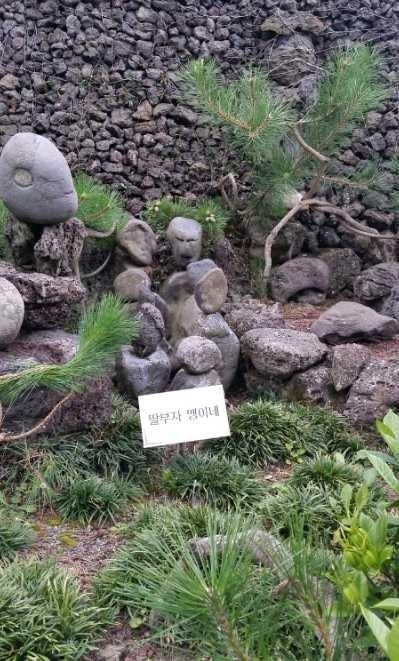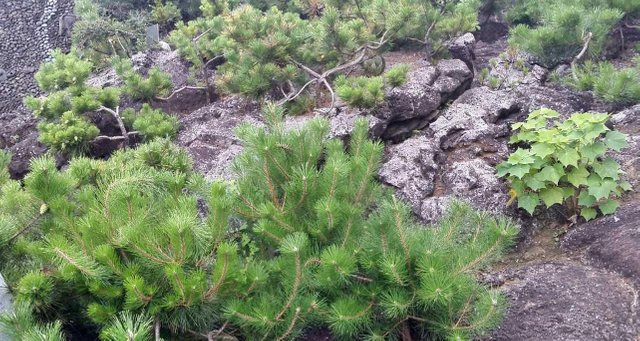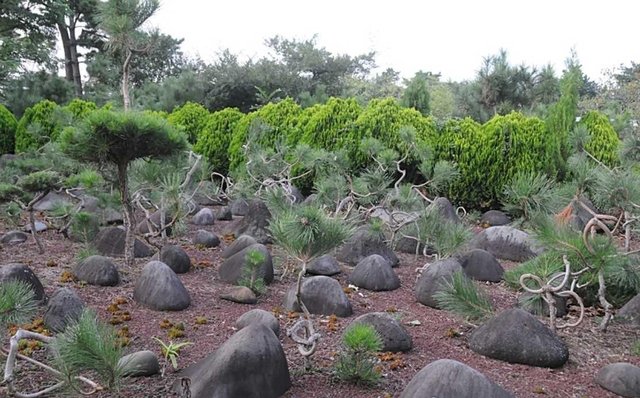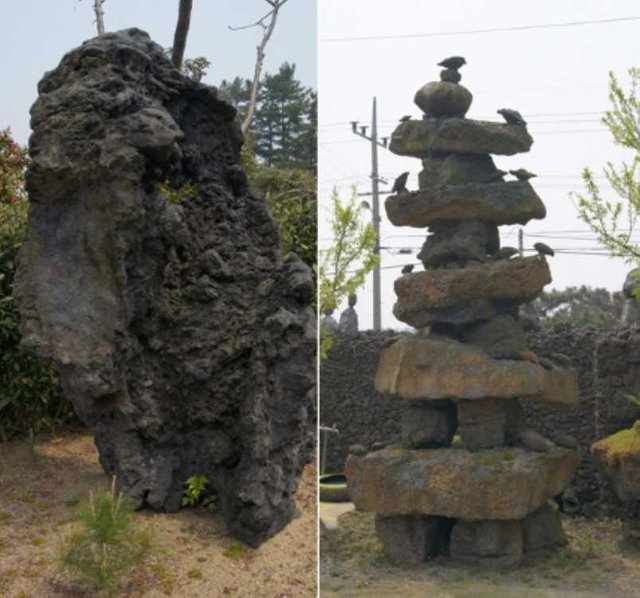A natural wonder on Jeju Island or Stone Museum
I already told you that Jeju Island is very unusual and there are many beautiful places here. The nature here is unique.
"Island of Wonders, magical island,
It's easy to live in, It's easy and easy to
live in it,
Chunga-Chang! "

The proof can serve as a stone museum, a stone garden or a stone village park.
I have the opportunity to walk only in the garden-stone village (제주 돌 마을 공원). In general, I can say that this island is a volcano and mostly consists of basalts, so there are many unusual rock forms. Here Koreans also enjoy what nature provides to them and open such a museum to not only preserve the culture, but also to show the world how miraculous the island is.
I noticed right away that the stone gardens, the stone-village gardens and the stone museum are three different places. On Jeju Island many are similar in name and contents of the place. As "The Island of Glass", The Magic World or the Castle of Glass about which I said last time.
The entrance to the park costs 5,000 Korean won (or 5 dollars). Children who enter will be charged $ 2 cheaper. The park can be skipped in about an hour. Not too big. The entrance to the park starts with a small enclosed museum. A local guide will tell you briefly about the parks themselves and about the unusual stones. And it also tells you where and how you can be interested in taking pictures.
The stone garden is not hard to find. It stands right on the street and the building is decorated with stones, so you'll recognize it soon. The museum is open to visitors every day from 9 am to 6 pm.
In the covered section of the park there are many different stone exhibitions, but most importantly, according to museum guides, is a love stone. It is a large rock with a translucent hole beside it. Lovers have to stand on each side and put their hands through the hole in the rock, and then their love will forever be sealed by a stone bond. Although, in my opinion this legend was created by the park owner, but who knows ...


It also has an exhibition of Halla Mountain (한라산), I will talk about it in the first article about Jeju island.

In the open part of the stunning open stone world garden.
Initially, the guides introduce us to the "lake", which resembles the Korean peninsula. Although it's hard to call it a lake, it's a bit puddle. Believe it or not, this lake is created by nature itself. Nothing adds water to it, mother-nature does it.

There is a zone here called a zoo, where stones are collected, resembling different animals. Although I can not see the animals there. For example, in the middle of the photo the rock looks like a flying duck. To me, it's just a rock curve. Even though there's something in the sky ... maybe that's a duck head. :)

I saw in "zoo" only an elephant. Looks like that's right?

There is a family zone. There, the stones tell the whole story.
For example, here is a picture of a legend about two stones Doli and Meni. We look from left to right. The first two stones are Doli and Meni, who love each other. They live long life, they have grandchildren. In the end, they turn into one stone (stone with heart).

And here the Dolya and Meni families gather together, with their children and grandchildren.

Next, Doli and Meni stood beside us, hugging each other.

We went deeper and reached the part of the garden where the unique trees were collected, more precisely, rocks with trees. Here the trees grow straight from the rock. Some trees have a difficult understanding of where their roots are.


There is also a tree on the stem whose stone is repaired.

There are coniferous trees with curly stems. And a pair of trees grow, intertwined with each other.


I love this tree, or rather a hybrid of three trees, which are united by one bar. It's a holy city, chlorosis, but I can not remember the name of the third plant.

This scene depicts the reliefs of Jeju Island. In the middle is Mount Hallasan, and the small rocks in the yard are the 368 secondary orym (volcano) volcanoes, which adorn the whole island of Jeju.
In this park we filmed various Korean dramas, movies, talk shows, he was visited by Korean stars, and said what the next poster in the park. By the way, Koreans love this kind of advertising. Often, in institutions hanging pictures, newspaper clippings, posters, indicating that there is a star screen.

At the end of the garden tour, I will tell a legend, who told us the guide. According to legend, Jeju Island was founded by a grandmother named Solmunde (설문대). He has 500 sons. One day, the children went hunting, and my grandmother lives at home, prepares dinner. He accidentally fell into a large pot of soup and dissolved into it. When the children return from the hunt, they eat the soup without suspecting anything. When the children understand everything, their eyes shed tears. Cries of red color cover the azaleas that bloom all over the island. The children themselves turned into rock cliffs around Mount Hallasan. 500 cliffs is called 500 generals.

Many travelers include trips to Jeju island in the eco-travel category, as there is a beautiful nature park and in addition, many museums are open, which shows created by nature itself.